- Overview
- Trip Outline
- Pricing
- Trip Includes
- Trip Excludes
- Gallery
- Reviews
- FAQ
Route

Technical Characteristics:
Route Profile: Easy. The daily tours are not difficult but the high altitude adds challenge. Some surefootedness and experience with hilly terrain would be of benefit, especially for the cruise portion of the tour.
Travel Season: Any date on request from January 2 to December 31, 2023
*NOTE: Galapagos boat cruises start only on Mondays. In order to participate, the start date of the tour
will need to be organized around the Monday start of the boat cruise
*Group rates available for this tour. As this is a guided tour, the pricing improves with more people participating. Please ask us for details (land portion only – fixed per person rates for the cruise portion).
Accommodation:
3* and 4* hotels, lodges and haciendas
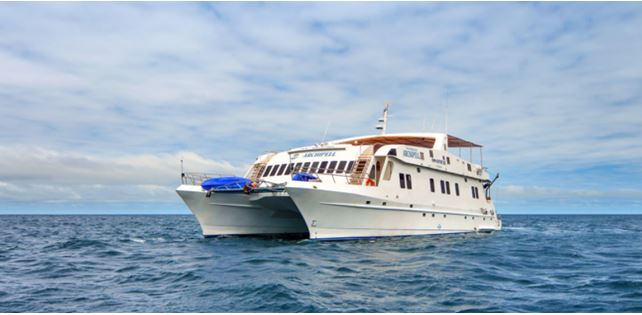
Most people know only Ecuador for the Galapagos Islands and the capital Quito. Ecuador has so much more to offer! It is in the Andean Region of the country from north to south, along the “Volcanic Avenue”, that the most amazing landscapes are appreciated! During this very complete round trip you will get to see the best of Ecuador. Highlights include Quito and equatorial line, a jungle tour in the Amazonas, the Mindo Cloud Forest and Otavalo, “Volcano Avenue” with Antizana Natural Reserve and Cuilotoa, visits to the cities of Baños, Riobamba, Cuenca and Guayaquil and finally a cruise through the Galapagos Islands.
Itineraries
Day 1
Arrival in Quito
Reception at the airport. You will be met by a staff member with a sign with your name. Transfer to the hotel in the northern part of the town, Mariscal. This is a convenient location in the touristic area of Quito, close to restaurants, bars and entertainment.
Day 2
Quito: Full day City tour with “Mitad del Mundo”
Full day private city tour in the historical part of Quito, including La Basilica Church, La Compañia Church and El Panecillo Hill. We leave the hotel in our private transport and will see the transformation from the new part of the city to the absolutely beautiful historical and colonial part of Quito. We will make some stops during the tour and visit all the interesting churches, plazas etc., but also will have time to simply soak up the local atmosphere, the many shops and sellers. Afterwards, we continue to “El Panecillo”, the hill in the center of Quito overlooking the city and the historical center. From here, on clear days, we may observe several of the snow-capped volcanoes surrounding Quito. After lunch, a visit to “Mitad del Mundo” where you can stand on the equatorial line and do some fun experiments.

Day 3
Quito – Lago Agrio – Cuyabeno
Transfer to the airport in Quito and fly to Lago Agrio. In Lago Agrio you are picked up by the Siona Lodge bus (it is easy, because the airport is very small) for a one and a half hour drive east towards the border of the Cuyabeno Reserve. On the way, you will see clear signs of an increasing population in these tropical areas, and of the oil industry dominating the area. At the “puente”, the bridge from where we go by canoe to the reserve, we will first enjoy a lunch in a small, local restaurant. After a minute in the canoe, you are in the wilderness, with chances to see small anaconda snakes, squirrel monkeys as well as other monkey species, and lots of kingfishers, herons, cormorants etc. Upon arrival at the lodge, check in and briefing about the next day’s activities.
Day 4
Cuyabeno
Full day jungle activities, including a highly exciting walk in the jungle (rubber boots are supplied) and a sail around the
absolutely stunning lagoons viewing wildlife and the scenery. Afternoon perhaps fishing for piranhas/pirañas and searching for pink river dolphins. Opportunity for a swim in the lagoon at
sunset with the other visitors in Cuyabeno. After or before
dinner, we can take a night walk in the jungle near the lodge to spot all the creepy night life.

Day 5
Cuyabeno
Full day jungle activities including a full day trip to the local Siona community. We will take a beautiful long canoe ride to the area where the local people have their two communities, farming the area and fishing in the river. We visit a local family who will show us how to make yucca bread and give us an idea of how their life is. Perhaps a visit to the local shaman. We will enjoy our picnic lunch before returning along the river keeping an eye out for dolphins, parrots, monkeys and much more.
Day 6
Cuyabeno – Quito
Transfer by canoe to Lago Agrio and afternoon flight to Quito. Transfer to the hotel.
Day 7
Mindo: Chocolate, Butterflies & Orchids
Day tour to visit the chocolate farm, the butterfly reserve and the orchid farm. Take off from Quito after breakfast. We head to cloud forest and Mindo, where the chocolate factory is located. From here we combine the visit with a tour to the “butterfly reserve”, a beautiful little farm where they breed about 20 different species of butterflies. Visitors witness the whole process of the birth and flight of these lovely creatures. Then we go to chocolate factory – here you will have around an hour of explanation of the process of harvesting and processing of cacao, with tasting of flavors and other interesting things. Finally we go to the orchid farm, which houses a fascinating collection of about 200 different species. This farm also has a small view point for bird watching and especially to observe hummingbirds. The night will be spent in Mindo.

Day 8
Mindo – Otavalo
After breakfast, the tour continues to the Otavalo Indian Market and Cuicocha Crater Lake. We leave Mindo and have an approximately three hour drive to Otavalo. The drive is fascinating, as we travel through the relatively dry areas caused by the “rain shadow” of the volcanoes, and it is easy to observe the sediments suggesting the formation of this part of the Andes. We cross the Equatorial line and soon pass into the lush Otavalo region, where the Otavalo Indians have managed to continue their proud traditions. This valley is very beautiful, surrounded by smaller volcanoes and lakes. We visit the Otavalo market where you will find all sorts of souvenirs, but it is perhaps even more interesting simply to watch the local people and the daily life. Afterwards, we’ll continue to Cotacachi, a small village known for its handcrafting of leather goods. Before heading to the Hacienda, we’ll visit the beautiful Cuicocha Crater Lake, where you will enjoy a stunning view of the lake and the green mountains surrounding it. Arrival at the Hacienda by the end of the day, where you will have a nice dinner.

Day 9
Otavalo – “Volcano Avenue”
The departure will be after breakfast, as we head from Otavalo to the Antisana Ecological Reserve. Antisana is a stratovolcano in the “Volcano Avenue” north of Quito. It’s not only the fourth highest mountain in Ecuador and a popular challenge amongst climbers from all over the world, but also an excellent place to enjoy the characteristic landscapes of the tropical volcanoes. The evergreen forests, moors and grasslands comprise the vegetation. During the visit to the Antisana Natural Park we will visit the Mica Lake to observe the flora and fauna. After the tour to the Antisano, we head for the traditional hacienda Cienaga where we will spend the night.
Day 10
Quilotoa Crater Lake – Baños
Your guide will pick you up after breakfast. First stop is Pujili town (if it’s a Thursday we will visit the Saquisili market before going to Pujili). We will continue to the Tigua town, where we will visit a traditional indigenous
house with guinea pigs at 3800 m. Afterwards a visit to see the local handicrafts of Tigua (optional visit to the indigenous people of Tigua). We
will continue to Zumbagua town – if it’s a Saturday we will be able to see
the Zumbagua Indigenous fair, where we can see lots of animals, fruits
and vegetables. We will continue our journey to the Quilotoa crater (20 minute drive) and will make a stop to see the erosion of the Quilotoa
crater. We arrive between 11 a.m. and 12 p.m. to the viewpoint at 3900 meters. From here we take a hike down to the lake at 3500 meters. Once back to the viewpoint you will find plenty of restaurants for lunch. In the afternoon we will continue to Baños.

Day 11
Baños
After breakfast we will visit the “waterfalls avenue” and will try the zip line over the Pastaza River with a beautiful view of the waterfall “Manto de la Novia”. On the other side of the river we will hike through the orchards and gardens of the peasants, and the trip continues until we reach the big waterfall “Pailon del Diablo”. Return to Baños, free afternoon.
Day 12
Baños – Riobamba
We leave Baños and drive until we reach Ambato city. Here we will visit the market of the city, “Mercado mayorista”, full of exciting colors, flavors and smells. We continue from Ambato to Guaranda, where we can see the beautiful colors of the mountains of the Ecuadorian Andes. Once we reach the Chimborazo lands we will see the particular vicuñas until we arrive to the Carriel reserve (4800 meters) in our vehicle. A short hike to the Whimper refuge, at 5000 meters, and in the afternoon we will go down to Riobamba city. Night in a hacienda on the outskirts of Riobamba.
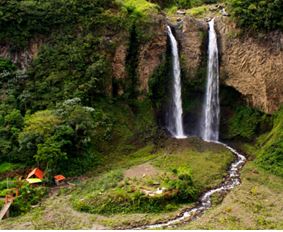
Day 13
Riobamba – Alusi – Ingapirca – Cuenca
We start in Riobamba and will drive to Alausí, 84 kilometers to the south of Riobamba, a small valley attractive to tourists for its train trip through the Devil´s Nose. (This train trip is not included, but it can be arranged with good time in advance.) Devil’s Nose is a massive nose shaped rock, with the train running along the slopes until it reaches a point where zig zags and descends 100 meters. Like entering a time machine, traveling by train is a unique experience (for fans of vertigo). It is a magnificent piece of engineering, and unique in the world. We continue the journey to the ruins of Ingapirca. In this complex you can appreciate the different architectural features, including the Temple of the Sun with its elliptical shape 37 meters long and 12 meters wide. It was used for the ceremonies and rituals of the Cañari-Inca culture. In addition, you can observe the oldest building in Ingapirca during our afternoon arrival in the beautiful city of Cuenca.
Day 14
Cuenca
City Tour in Cuenca. The tour starts in the colonial part which is surrounded by history. One of the main attractions is the Tomebamba River, running through the downtown, with old houses that tower above the grassy riverside. Walk through the central plaza, the Calderon Park, and visit the new cathedral, whose construction in pink marble and beautiful stained glass windows is breathtaking. The same park is crossed to see the old cathedral which was renovated for the visit of Pope Juan Pablo II in 1985. Visit to the Monastery of El Carmen and the Immaculate Conception, the monument of “El Rollo del Vecino” and the church of San José de la Merced. At the end of our tour we will visit the viewpoint of Turi and then return to the hotel.

Day 15
Visit to National Park “Las Cajas” – Guayaquil
This trip from Cuenca to Guayaquil is magical, as we can see the changes of the climatic floors in a few hours. We will visit the National Park Cajas – a glacial landscape with huge horseshoe shaped valleys, remnants of an icy past. This park is the main source of drinking water for the city of Cuenca. The landscape dotted with more than two hundred blue lakes, one of the main attractions of the park in addition its flora, and the interesting polylepis forest, populated by a tree known for its particular bark that resembles paper. In the afternoon we reach the southern point of the Ecuadorian coast, where we will see the great tropical crops of fruits, bananas, cocoa, etc. At the end of the day, transfer to hotel in Guayaquil.
Day 16
Galapagos Wildlife Cruise Morning - Arrival to Baltra Airport Afternoon - North Seymour
Upon arrival in Baltra, travellers pass through an airport inspection point to make sure that no foreign plants or animals are introduced to the islands, and to pay the park entrance fee of $100. A guide will meet you, help you collect your luggage, and escort you on a short bus ride to the harbor. In the afternoon, arrive in North Seymour. This islet is one of most visited sites, and it is teeming with birdlife. An easy circular path takes you through the archipelago’s most extensive colonies of blue-footed boobies and frigate birds. At the beginning of the breeding season, adult frigate bird males blow up their vivid red pouches to impressive football-sized balloons. This is one of the few spots where you can compare the magnificent and the great frigate-bird breeding next to each other.

Day 17
Morning - Prince Philip’s Steps (Genovesa) Afternoon - Darwin Bay
Morning at Prince Philip’s Steps (Genovesa). Before landing, you will take an inflatable dinghy ride along the eastern arm of the caldera. As we approach, the soaring 25 meter high walls become overwhelming. Sometimes, a Galapagos fur seal is resting or a seabird is nesting on one of the ledges at the base. You will then have to hike and overcome the steep stairs from the landing dock to a bush of palo santo shrubs on top. Red-footed boobies gratefully use these scarce nesting places; so that they don’t have to nest on the rocky ground. Upon arriving at the edge of the rim, the bushes open up and you can enjoy panoramic views, a strong sea breeze and the amazing flying skills of countless seabirds. Following the exposed rim, you will first pass the Nazca boobies and finally reach the extensive storm petrel nesting places, where if you’re lucky you can spot the well-camouflaged short-eared owl hunting for them on foot! In the afternoon, visit Darwin Bay. Inside the submerged caldera of Genovesa lies Darwin Bay, with a diameter of more than 1.5 kilometers and it is almost 200 meters deep. The small area will surprise you repeatedly, walking along a coral sand beach, crossing barren lava formations and creeks, passing tidal pools, shrubs and further ahead following the top of some cliffs. With this peaceful surrounding, every single species has occupied its own ecological niche (or habitat) without disturbing others. You might encounter a lava lizard, locusts or a small snake-species (Galapagos racer).
Day 18
Morning - Bartolomé Afternoon - Sullivan Bay (Santiago)
In the morning, visit the beautiful volcano islet of Bartolomé is among the youngest of the islands, and on a geological scale was just recently born out of fire. Although at first sight lifeless, Bartolomé offers some of the wildest landscapes and best panoramas of the entire archipelago. To enjoy the postcard view of the idyllic ‘Pinnacle Bay’ you have to climb the stairs to the viewpoint on top of the island, about 114 meters. Enter a dramatic world of threatening (though extinguished) nearby spatter cones, craters, and lightweight lava droplets that have been spewed out by fiery fountains. The Summit Trail is also ideal for witnessing how scanty pioneer vegetation such as lava cactus struggles to take root in the bare virgin lava fields. In the afternoon, visit Sullivan Bay (Santiago). Setting foot at the lava stream covering Sullivan Bay is like landing on the moon. The desolate, stretched-out fields seem mostly lifeless, but there is plenty to see on this highly popular site amongst photographers. Pacific green turtles seasonally bury eggs in the tiny white sand beach, where you might also encounter crabs, a strayed blue heron or an oystercatcher. On the lava flow, only sparse pioneer vegetation such as lava cacti and carpetweed are able to grow.

Day 19
Morning - Charles Darwin Research Station Afternoon - Highlands (Santa Cruz)
In the morning, visit the Charles Darwin Research Station. Although the great majority of Galapagos visitors come here to observe and appreciate natural wonders, it is also interesting to learn how the protection and conservation of the islands are carried out. The main attractions are the National Park information centre, the Van Staelen Exhibition Hall, the Breeding and Rearing Centre for young tortoises, and adult Galapagos tortoises in captivity. In the afternoon, visit the Highlands (Santa Cruz). The road to the highlands leaves from Bellavista, a small village located a 15 minute drive from Puerto Ayora, and passes through the agricultural zone, near the National Park boundary, the Miconia Zone, and then goes to the Fern and Sedge zone. With clear weather, this area boasts beautiful scenes of rolling hills and extinct volcanic cones covered with grass and lush greenery all year round. Here you will visit the Twin Craters, which are two pit craters, as well as a local ranch where we can observe the giant tortoise of Santa Cruz Island in its natural habitat.
Day 20
Morning – Cormorant Point (Floreana) Afternoon Post Office Bay (Floreana)
In the morning, arrival at Cormorant Point (Floreana). The peninsula of Cormorant Point forms the extreme north cape of Floreana, which formed from smaller volcanic cones, covered by tropical dry forest (palo santo). At the landing beach, you will be welcomed by a small Galapagos sea lion colony. The green sand on this beach contains a high percentage of glassy olivine crystals which have been blown out by the surrounding tuff cones. The ‘flour sand’ beach on the southern side of the peninsula is made up of even finer white coral sand which feels very smooth on the feet. Parrot fish have pulverised it, grinding the calcareous skeletons of living coral. You can spot schools of stingrays who love the sandy bottom to hide themselves. During the first months of the year, Pacific green turtles come ashore to bury their eggs. In the afternoon, visit Post Office Bay (Floreana). Post Office Bay is one out of three nearby visitor’s sites on Floreana’s northern coast. Bring your postcards and post them in the peculiar barrel on this historic site. The barrel commemorates an improvised mail service that was set up for communication between British 16th century whalers and poachers.
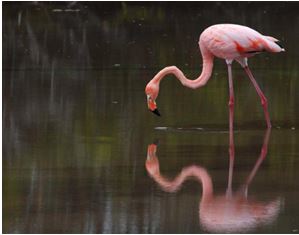
Day 21
Morning - Gardner Bay (Española) Afternoon Suarez Point (Española)
In the morning, visit Gardner Bay (Española). The striking white beach at Gardner Bay is an important breeding site for Pacific green turtles. However, without doubt its main attraction is the Galapagos sea lion colony. Females stay year round in this nursery, suckling their pups up to an age of three years, although they start to fish after five months of their birth. During the breeding and mating season, the colony becomes even bigger. In the afternoon, arrive at Suarez Point (Española). Huge ocean waves crash onto the southern basaltic cliffs of Suarez Point, forming a spectacular blowhole, where the water sprays meters high into the air (depending on the season, the tide and how strongly the sea breeze pushes the waves). Take your time for a meditative break in silence at this emblematic viewpoint, and convert this unforgettable moment in a lifetime experience.
Day 22
Morning – Pitt Point (San Cristóbal) Afternoon - Witch Hill (San Cristóbal)
Morning arrival at Pitt Point (San Cristóbal). Two wind sculptured tuff cones at Pitt Point make up the extreme eastern end of San Cristóbal, and thus, the archipelago as well. These cliffs were the first sight of land when HMS Beagle and Charles Darwin arrived on the 15th of September 1835. On the small green sand beach, you will be welcomed by a group of barking Galapagos sea lions. This is a bachelor colony, where males usually relax and prepare themselves for fighting and mating. From the saltbush and spiny shrubs behind the beach, a trail leads up to an area of tropical dry forest vegetation: most of the year you will find leafless palo santo trees, yellow cordia shrubs, tiny prickly pear cacti and carpetweed that turns red in the dry season. After the somewhat steep climb through a gully to the clifftop, you can wander around the only colony on the Galapagos that is home to all three species of boobies: blue-footed, red-footed and Nazca booby; as well as both species of frigate bird (great and magnificent), famous because of their scarlet balloon sized pouches during mating season. Frigate birds prefer to attack returning boobies and conduct aerial battles rather than fishing for themselves. In the afternoon, arrive at Witch Hill (San Cristóbal). The primary attraction of this site is the coral sand beach, an excellent place to swim and snorkel. Witch Hill is the remains of a tuff cone and one of the first sites visited by Charles Darwin. It has an impressive landscape, where it is often possible to see coastal and migratory birds, including pelicans, blue-footed boobies and swallow-tailed gulls; as well as sea lions and marine iguanas. At times, the lagoon is completely dry and deposits of salt can be found at the bottom. The people of Puerto Baquerizo Moreno used to use the lagoon as a salt mine.
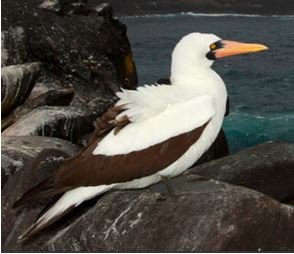
Day 23
Morning - Lobos Islet (San Cristóbal) Afternoon Departure
Morning arrival to Lobos Islet (San Cristóbal). The Lobos Islets beach harbors a colony of Galapagos sea lions. As in other colonies in the archipelago, you can approach nurturing females within a few meters. In the breeding season this colony is also visited by territorial males, defending and mating the harem on their part of the beach. This low islet is home to more than just Galapagos sea lions. Two other emblematic species breed here: male blue-footed boobies and great frigate birds who try to impress the females (and tourists) with clumsy dances, heaving their striking blue feet or blowing up their balloon-sized scarlet pouches. During the breeding season, the fluffy and hungry chicks cry for food, and when their wings get strong enough, they will learn to fly. In the afternoon, transfer out to San Cristóbal Airport. Assisted by the naturalist guide and some crew members, the dinghy will bring you and your luggage to the San Cristóbal Airport, where we will take the shuttle back to Quito airport.

Day 24
Quito – Transfer out
Transfer to Airport and end of services.

Prices
Included:
Land Portion of Tour:
- All transfers
- English speaking guide during activities/tours
- All activities/tours in private services except following tours (shared services): Tour to Siona Lodge (max 12 people per guide)
- Entrance fees (except Galapagos Entrance fee)
- Domestic flight: Quito – Lago Agrio – Quito
- Accommodation
- Meals as described in the itinerary (24 breakfasts, 12 lunches and 12 dinners)
Galapagos Cruise Portion of Tour:
- All meals while onboard
- Water, coffee and tea
- Double/Twin cabin accommodation with private facilities
- All excursions as mentioned in the itinerary (itinerary subject to change) with English speaking naturalist guide
- All transfers in Galapagos
Not Included:
Land Portion of Tour:
- Domestic and international flights
- Fee to Siona community ($5.00 USD per person)
- Galapagos entrance fees: Galapagos Park Entrance fee ($100.00 USD), Ingala ($20.00 USD) and Isabela Island Local Taxes ($10.00 USD)
- Meals not mentioned in the program
- Alcoholic and soft drinks
- Personal expenses
- Tips
- Everything not mentioned in the “Included” list
Galapagos Cruise Portion of Tour:
- Galapagos National Park entrance fee ($100. 00 USD per person, subject to change)
- Transit Control Card ($20.00 USD per person, subject to change)
- Wetsuit rental
- Soft and alcoholic drinks
- Tips
- Travel insurance or other items of personal nature
- Everything not mentioned in the “included” list
No Details Found


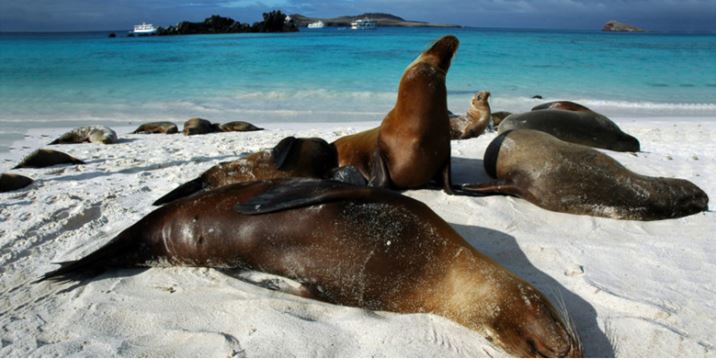

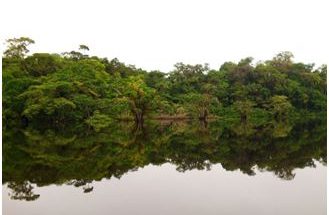
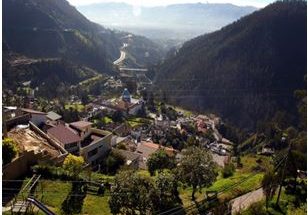
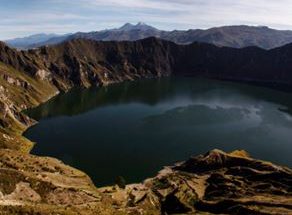
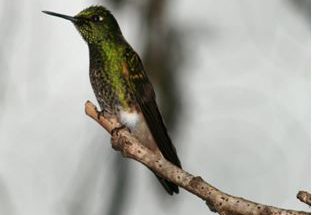

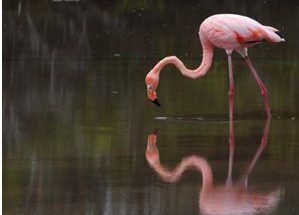


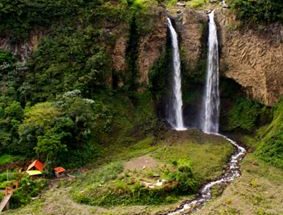
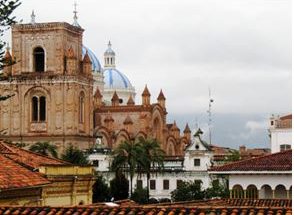
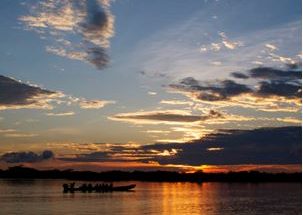
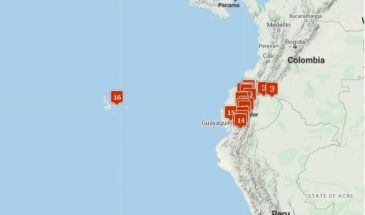
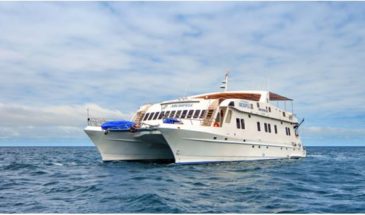





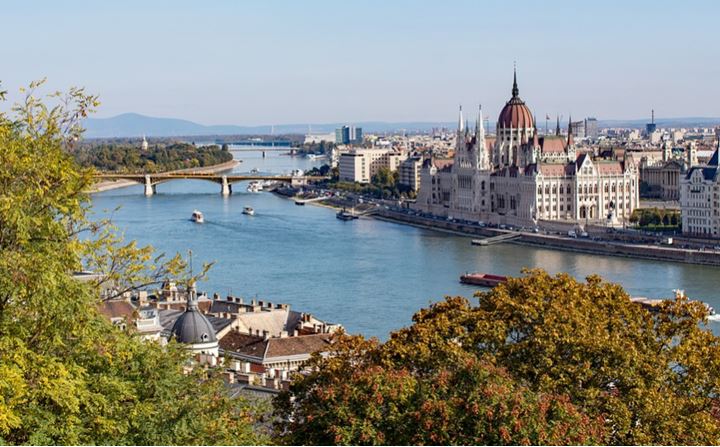
There are no reviews yet.